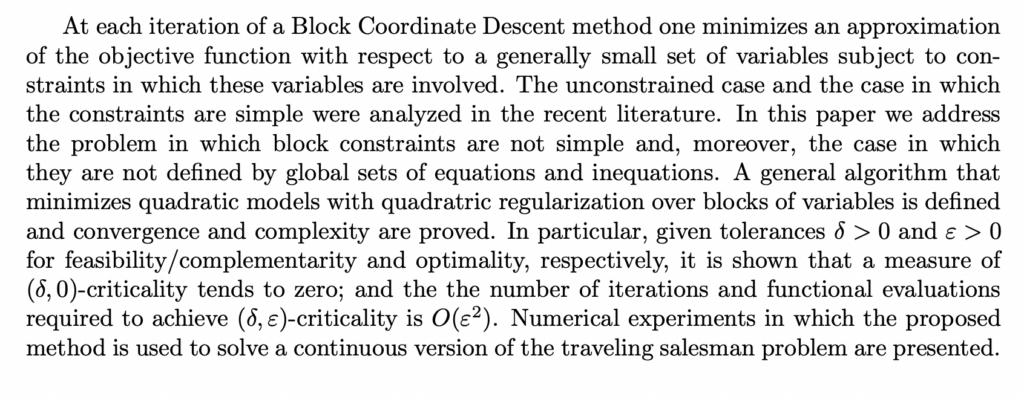Patrizio Frosini, Università degli Studi di Bologna, Italy
On the use of group equivariant non-expansive operators for topological data analysis and geometric deep learning.
Group equivariant non-expansive operators (GENEOs) have been recently introduced as mathematical tools for approximating data observers, when data are represented by real-valued or vector-valued functions. The use of these operators is based on the assumption that the interpretation of data depends on the geometric properties of the observers. In this talk we will illustrate some results in the theory of GENEOs, showing how these operators could be used for topological data analysis and geometric deep learning.
Filipa Valdeira, Università degli Studi di Milano
Gaussian Processes for shape modelling and registration
Gaussian Processes are a powerful framework to perform shape modelling and registration in a unified manner. We will present this framework from both a theoretical and practical point of view, looking at recent developments, as well as their limitations. We will then introduce a novel probabilistic registration problem for this setting, together with its application to the challenging case of ear modelling.
Rongjiao Ji, Università degli Studi di Milano
Group pattern detection of longitudinal data using a functional statistics framework
Estimations and evaluations of the main patterns of time series data in groups benefit large amounts of applications in various fields. Different from the classical auto-correlation time series analysis and the modern neural networks techniques, in this paper we propose a combination of functional analysis of variance (FANOVA) and permutation tests in a more intuitive manner for a limited sample size. First, FANOVA is applied in order to separate the common information and to dig out the additional categorical influence through paired group comparison, the results of which are secondly analyzed through permutation tests to identify the time zones where the means of the different groups differ significantly. Normalized kernel functions of different groups are able to reflect remarkable mean characteristics in grouped unities, also meaningful for deeper interpretation and group-wise classification. In order to learn whether and when the proposed method of FANOVA and permutation F-test works precisely and efficiently, we compare the estimated kernel results with the ground truth on simulated data. After the confirmation of the model’s efficiency from simulation, we apply it also to the RAVDESS facial dataset to extract the emotional behaviors of humans based on facial muscles contractions (also called action units (AU) technically in computer graphics), by comparing the neutral performances with emotional ones.
Stevo Rackovic, Instituto Tecnico Superior, Lisbon
Increasing the Accuracy and Interpretability for Inverse Rig Solutions in the Human Face Animation.
Digital human animation relies on high-quality 3D models of the human face—rigs. A face rig must be accurate and, at the same time, fast to compute. One of the most common rigging models is the blendshape model. We will cover standard approaches to inverse rig modeling, as well as introduce a novel algorithm for solving the nonconvex inverse rig problem in facial animation. Our approach is model-based, but in contrast with previous model-based approaches, we use a quadratic instead of the linear approximation to the higher-order rig model. The computational cost increase is feasible as it not only gives high fidelity of the expression but additionally increases the sparsity of the resulting parameter vector — an important feature for interpretability by animation artists. The proposed solution is based on a Majorization Minimization (MM) in conjunction with increment-based optimization and leads to an easy-to-solve problem that is separable in the parameters at each algorithm iteration.
Mário Figueiredo, Instituto de Telecomunicações, Instituto Superior Técnico, Universidade de Lisboa
Dealing with Strongly Correlated Variables in Supervised Learning
Linear (and generalized linear) regression (LR) is an old, but still essential tool. A central problem in LR is the selection of relevant variables, as using fewer variables tends to yield better generalization and because this identification may be meaningful (e.g., which genes are relevant to predict a certain disease). In the past quarter-century, variable selection (VS) based on sparsity-inducing regularizers has been a central paradigm, the most famous example being the LASSO, which has been intensively studied, extended, and applied. In many contexts, s highly-correlated variables (e.g., several genes that are strongly co-regulated), thus simultaneously relevant as predictors. In this case, sparsity-based VS may fail: it may select an arbitrary subset of these variables and it is unstable. Moreover, it is often desirable to identify all the relevant variables, not just an arbitrary subset thereof, a goal for which several approaches have been proposed. This talk will be devoted to a recent class of such approaches, called ordered weighted l1 (OWL). The key feature of OWL is that it is provably able to explicitly identify (i.e. cluster) sufficiently-correlated features, without having to compute these correlations. Several theoretical results characterizing OWL will be presented, including connections to the mathematics of economic inequality. Computational and optimization aspects will also be addressed, as well as recent applications in subspace clustering, learning Gaussian graphical models, and deep neural networks.
Perfect Gidisu, TU-Eindhoven
Predicting customer investment potential value: An application in a Fintech company
Notions of investment potential and unexploited investment potential are crucial for target marketing and Customer Relationship Management (CRM) strategies in AcomeA. Investment potential measures the sustainable investment capacity of a customer in this context. Based on the interplay between investment potential value and actual investment value, managers can devise customer specific strategies. We introduce a model for predicting the investment potential value of a current customer. Furthermore, we discuss and apply different modeling strategies for segmenting customers based on the investment potential value.
Rasool Taban, IST Lisbon
A novel balancing technique for mixed-type variables based on SMOTE
Imbalanced data, as a common characteristic of many real-world applications, got huge attention during the last two decades. Balancing techniques as the famous and easily applicable solutions, thoroughly investigated in the literature. However, most of the balancing techniques are designed to handle the issue when all the variables are continuous. The lack of proper balancing technique to handle the imbalanced data issue in datasets with mixed-type variables still exists, where only a few techniques are available. In this talk, we will present a novel balancing technique for mixed-type variables based on the technique of SMOTE – that utilises the Huang distance to find the nearest neighbours in SMOTE algorithm and redefine the oversampling step to be compatible with the mixed-type characteristic of datasets.
Jose Mario Martinez, University of Campinas, Brazil
Block Coordinate Descent for smooth nonconvex constrained minimization
(joint work with E. G. Birgin)

Greta Malaspina, University of Novi Sad
A Modified Levenberg-Marquardt Method for Large Scale Network Adjustment
We present a numerical optimization approach for the solution of large scale sparse least square problems that arise in Network Adjustment and Localization Problems. In particular we focus on an adjustment problem that comes from the digitalization of Cadastral maps. We consider a modification of Levenberg-Marquardt method that deals with the large number of variables and observations by approximating the linear system that needs to be solved at each iteration of LM method with a modified block-diagonal one, defined taking into account the underlying structure of the problem. We present the convergence analysis of the method for both the global and the local case, and we compare the necessary assumptions and the convergence behaviour with those of classical LM. Moreover, we present a set of numerical results that show the effectiveness of the proposed method for large problems.
Giulia Ferrandi, TU-Eindhoven
A harmonic framework for stepsize selection in gradient methods. An application to clustering problems
We study the use of the harmonic Rayleigh quotients with target for the stepsize selection in gradient methods for nonlinear optimization problems. We show that this stepsize provides a framework to reinterpret existing stepsizes and select new ones. In particular, we analyze the adaptive Barzilai–Borwein stepsize (Zhou et al., 2006) and propose a target-based version of it. While existing stepsizes usually correspond to negative values for the target, we also consider positive targets. We extend the classical convergence analysis for quadratic problems (Dai and Liao, 2002) to these new stepsizes. Finally we compare different choices of target on two clustering problems: the convex k-means (Lindsten et al., 2011) and the multinomial mixture model for graph clustering (Newman and Leicht, 2007).

 Users Today : 0
Users Today : 0 Users Yesterday : 1
Users Yesterday : 1 Users Last 7 days : 18
Users Last 7 days : 18 Users Last 30 days : 86
Users Last 30 days : 86 Users This Month : 9
Users This Month : 9 Users This Year : 341
Users This Year : 341 Total Users : 4287
Total Users : 4287 Views Today :
Views Today :  Views Yesterday : 1
Views Yesterday : 1 Views Last 7 days : 22
Views Last 7 days : 22 Views Last 30 days : 109
Views Last 30 days : 109 Views This Month : 10
Views This Month : 10 Views This Year : 409
Views This Year : 409 Total views : 7600
Total views : 7600 Who's Online : 0
Who's Online : 0